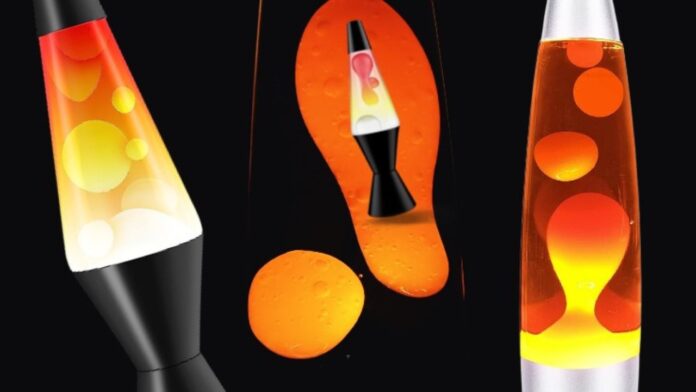Whenever you see a lava lamp, it’s hard not to be mesmerized by the way the wax moves up and down inside the glass. But what you might not know is that there’s also some science happening there. Specifically, Where Is Heat Transferred By Conduction In A Lava Lamp.
In this blog post, we will explore where the conduction takes place in a lava lamp. We will also discuss how the movement of the liquid affects the transfer of heat. Finally, we will consider why the conduction is important for creating a lava lamp effect.
What Is Heat Transferred:
Heat is always transferred from a hotter object to a cooler object. The rate of heat transfer depends on the difference in temperature between the two objects. The greater the difference in temperature, the faster the heat will transfer.
In general, there are three modes of heat transfer:
1. Conduction:
Heat is transferred between two objects that are in contact with each other. The heat moves from the hotter object to the cooler object.
2. Convection:
Heat is transferred by the movement of a fluid (liquid or gas). The hot fluid rises and the cooler fluid falls, transferring heat in the process.
3. Radiation:
Heat is transferred by electromagnetic waves. This type of heat transfer does not require a physical connection between the two objects.
So, Where Is Heat Transferred By Conduction In A Lava Lamp:
In a lava lamp, the heat is transferred from the metal coil at the bottom of the lamp to the liquid wax. The heat from the coil makes the wax expand and become less dense.
This causes the wax to rise until it reaches the top of the lamp. Then, as the wax cools, it becomes denser and falls back down again.
The whole process repeats over and over, creating the mesmerizing effect that we all know and love.
How The Movement Of Liquid Affects The Transfer Of Heat:
The movement of the liquid affects the transfer of heat in two ways. First, as the wax expands and becomes less dense, it rises to the top of the lamp.
This means that the heat is transferred from the bottom of the lamp to the top.
Second, as the wax cools and becomes denser, it falls back down again. This means that the heat is transferred from the top of the lava lamp to the bottom.
Why The Conduction Is Important For Creating A Lava Lamp Effect:
The conduction is important for creating a lava lamp effect because it is what causes the wax to move up and down inside the lamp.
Without the conduction, the heat would just stay at the bottom of the lamp and the wax would not move.
What Are Some Factors That Can Affect The Amount Of Heat Transferred:
There are a few factors that can affect the amount of heat transferred in a lava lamp. The first is the size of the metal coil at the bottom of the lamp.
A larger coil will transfer more heat to the wax and cause it to expand more. This will make the wax rise higher in the lamp.
The second factor is the material of the coil. A coil made of a material with a higher conductivity will transfer more heat to the wax.
The third factor is the temperature of the room. A warmer room will cause the wax to expand more and rise higher in the lamp.
The fourth factor is the type of wax used. Some waxes have a higher expansion rate than others. This means that they will expand more when heated and rise higher in the lamp.
All of these factors can affect the amount of heat transferred and the height that the wax rises in the lava lamp.
Conclusion:
The lava lamp is a great way to understand the principles of conduction. By watching the heat transfer in the liquid, students can see how atoms vibrate and move energy throughout an object.
In both cases, understanding conduction helps us better appreciate one of nature’s simplest but most fascinating phenomena. For users of lava lamps, it’s also a fun way to watch the effects of heating and cooling on a substance.
FAQs:
1. How does the transfer of heat work in a lava lamp?
Answer: When the lamp is turned on, the heat from the light bulb starts to warm up the wax inside the glass globe. This wax is a liquid when it’s warm, but as it starts to cool down it becomes more solid. The wax at the top of the globe is cooler than the wax at the bottom.
2. What part of the lamp is responsible for transferring heat?
Answer: The filament of the lamp is responsible for transferring heat. As electrons flow through the filament, they collide with atoms, which causes the atoms to vibrate. This vibration creates heat, which is then transferred to the surrounding air by convection.
3. Are there any dangers associated with using a lava lamp?
Answer: While lava lamps are considered a safe source of light, there are a few things to be aware of when using them. For example, if you are a lamp user, be sure not to stare at the lamp for an extended period of time as it could cause eye fatigue.
4. How does the position affect how much heat is transferred by conduction in a lava lamp?
Answer: When it comes to using lamps for heat, the positioning of the lamp is key. For example, if you’re sitting close to a lamp, you’ll get more heat from it than if you’re standing further away. And if you have a table lamp, the light will be warmer near the bulb.
5. What is the science behind a lava lamp?
Answer: A lava lamp is a type of desk lamp that uses heated mineral oil and colored wax inside a glass bottle to create a visual effect. When the lamp is turned on, the oil is heated and rises because it is less dense than the wax.




